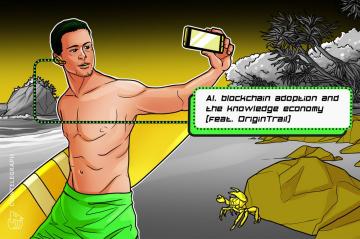During a keynote speech at the Ethereum Community Conference 6 (EthCC), a16z partner Sriram Krishnan shared a presentation, explaining how Web3 can fix social media and consumer applications.
Krishnan stressed that “the world of social media is stuck in a different era, and things need to change.” The executive said that his goal in the presentation was to convince the audience that “now is the moment to build large-scale crypto consumer social media marketplace applications.”
An executive from venture capital firm Andreessen Horowitz (a16z) believes that Web3 has the solutions to the headaches and problems found on Web2-based social media platforms.
 Sriram Krishnan at the EthCC event in Paris. Source: EthCC Livestream
Sriram Krishnan at the EthCC event in Paris. Source: EthCC LivestreamKrishnan, who also worked on prominent social media companies like Meta and Twitter, highlighted some common points that modern social media platforms are currently operating. This includes locking-in followers to one specific platform. “You can’t take them with you when you leave,” he said.
In addition, social network platforms started to have limited to no application programming interface (API) support, low economic benefits for creators and they do not allow users and creators to have a voice in terms of platform governance.
The executive believes there are promising paths and opportunities for Web3 social platforms based on these issues. They include targeting underserved communities and high-status individuals that do not have a voice on other platforms and not focusing on financial incentives immediately.
Related: Dev shares how ENS plays a role in decentralized social media
Contrary to popular approaches where Web3 is being marketed as a way for creators to get paid more, the executive believes that another promising path that could lead to broader adoption is to refrain from introducing financial incentives at the start of creating a social platform. He explained:
“Social media dynamics are weird and complicated. These are complex human dynamics and when you introduce money, I think it gets challenging to kind of map those dynamics.”Krishnan also explained that introducing money immediately puts the focus on the monetary element instead of just posting to have fun and bring communities together.
However, this doesn’t mean they should never introduce financial mechanisms. Krishnan highlighted that crypto projects have the power to eventually introduce creator economics and give governance stakes to those who use their platform.
Magazine: Decentralized social media: The next big thing in crypto?





























































